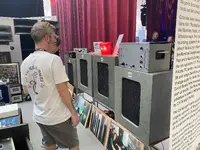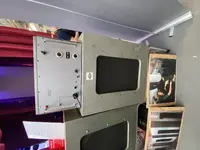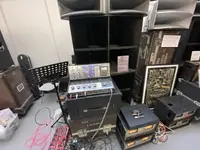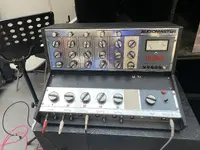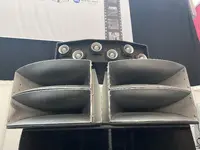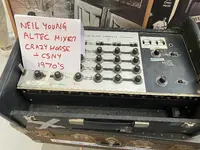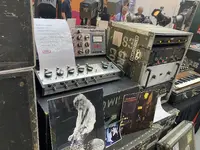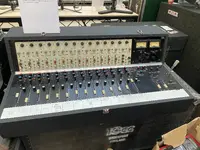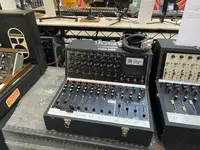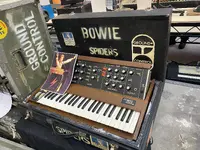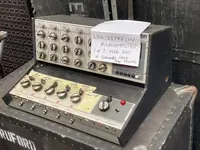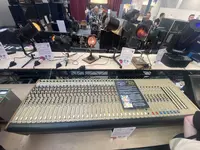rob aylestone
Moderator
I mentioned the other day I was involved with a big UK exhibition - show - PLASA, and I'd been asked to man the Vintage collection stand that had been really popular when started in a small way last year.
Pink Floyd's PA was pretty impressive, but Led Zepplin's 200W, 4 4 x 12" WEM was great too, plus some old gear from David Bowie's shows. On top of this, EMI Abbey Road Studios Altec monitors were there too - All day, we'd get Pink Floyd interspersed with some 60's Beatles studio tracks. It's these I want to mention. They played Pink Floyd mixes the big PA, and a guy played the bass line from money to show what they sounded like at the bottom - and it was pretty impressive. However - the Beatles stuff brought back some of the conversations we have had recently on monitors here.
The pictures show John Lennon and Paul McCartney in front of these speakers, but they're against the studio wall on these rather spindly stands - in the exhibition, they're free standing. This of course means that you lose some bass, but while I repeatedly heard top end sizzle and clean mids, they just had no real bass. So much so that it was very obvious they were not just a bit bass light, but they were bass missing. This means that when the Beatles heard their mixes and were happy with them, this was NOT remotely how we listen to the Beatles now? If Abbey Road's 60s mixes were listened to like this, our current understanding of what constitutes a good mix may be totally wrong? Now, these tracks all have contemporary amounts of bass, when back then, I really think they probably had very little. This might even explain away why the electrostatic speakers were usable and loved in that era - they simply didn't record the bass to be prominent in a mix like we do now.
I've attached loads of the vintage gear pictures - big desks, very low channel count and very basic facilities, but the stand was often 3 deep in people wanting to touch thing. I've been asked back again next year, and hope to be able to do every day - even though I've got no voice left.
Pink Floyd's PA was pretty impressive, but Led Zepplin's 200W, 4 4 x 12" WEM was great too, plus some old gear from David Bowie's shows. On top of this, EMI Abbey Road Studios Altec monitors were there too - All day, we'd get Pink Floyd interspersed with some 60's Beatles studio tracks. It's these I want to mention. They played Pink Floyd mixes the big PA, and a guy played the bass line from money to show what they sounded like at the bottom - and it was pretty impressive. However - the Beatles stuff brought back some of the conversations we have had recently on monitors here.
The pictures show John Lennon and Paul McCartney in front of these speakers, but they're against the studio wall on these rather spindly stands - in the exhibition, they're free standing. This of course means that you lose some bass, but while I repeatedly heard top end sizzle and clean mids, they just had no real bass. So much so that it was very obvious they were not just a bit bass light, but they were bass missing. This means that when the Beatles heard their mixes and were happy with them, this was NOT remotely how we listen to the Beatles now? If Abbey Road's 60s mixes were listened to like this, our current understanding of what constitutes a good mix may be totally wrong? Now, these tracks all have contemporary amounts of bass, when back then, I really think they probably had very little. This might even explain away why the electrostatic speakers were usable and loved in that era - they simply didn't record the bass to be prominent in a mix like we do now.
I've attached loads of the vintage gear pictures - big desks, very low channel count and very basic facilities, but the stand was often 3 deep in people wanting to touch thing. I've been asked back again next year, and hope to be able to do every day - even though I've got no voice left.

